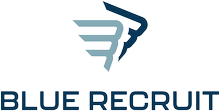Key Hiring Trends in 2025
AI & Automation in Recruitment
- Recruitment tools powered by AI are becoming standard: resume screening, interview scheduling, candidate matching, even initial video interview analysis.
- These tools help reduce hiring time and bias, though there’s still a need for human oversight to maintain fairness and candidate experience.
Skills-Based Hiring Over Degrees
- Employers are shifting away from strict degree requirements and focusing more on the skills candidates actually bring.
- Niche skills are in high demand. Many roles require updated skills, even in existing roles.
Remote, Hybrid & Flexible Work Models
- Flexibility in where and how people work is now expected, not optional. Hybrid work is often favored over fully remote or fully in-office.
- Hiring globally becomes easier: location is less of a barrier, giving companies access to broader talent pools.
Upskilling, Reskilling & Learning Pathways
- The rapid pace of technological change means many workers need new skills. Employers are investing in training, learning tools, and redefining job roles.
- Personalized development paths, micro-credentials, and immersive learning are emerging.
Focus on Employee Well-Being, Experience & Work-Life Balance
- Wellness, mental health, flexible hours, and better benefits are now core parts of what candidates expect. Employers who can’t offer a good experience lose talent.
- Candidate experience is also critical — transparent processes, faster feedback, less friction in applications.
Diversity, Equity & Inclusion becomes Strategic
- DEI is no longer just “nice to have” — it’s central. Inclusive job descriptions, bias reduction, diverse hiring panels, tracking diversity metrics—all are becoming standard practices.
- Tools (including AI) are being used to help with fair screening, but there’s caution about unintended bias in tools themselves.
Employer Branding & Talent Attraction Strategy
- Because competition for good candidates is stiff, organizations are investing more in how they are seen as employers: culture, values, reputation.
- Transparent communication, showing what’s behind the brand (e.g. real stories from employees), benefits beyond salary all play a role.
Data-Driven Decision Making & Predictive Analytics
- Hiring decisions are becoming more strategic: using data to anticipate which roles will be hardest to fill, what skills will be in demand, and measuring effectiveness of recruitment channels.
- Analytics are also used to monitor DEI, candidate drop-off points in process, and refine the hiring funnel.
Compensation Transparency & Equity
- More organizations are opening up about pay ranges, bonuses, equity, etc., to attract candidates and build trust.
Implications & What To Do
For Employers / Recruitment Agencies:
- Invest in modern recruitment tools (AI, ATS, analytics).
- Reevaluate job requirements: can you focus more on skills and less on formal credentials?
- Offer flexible & remote work options.
- Develop strong training/upskilling programs.
- Build or strengthen your employer brand and candidate experience.
For Candidates:
- Emphasize your practical, transferable skills and how you’ve ported them across roles/projects.
- Be proactive about upskilling — online courses, micro-credentials, side projects.
- Be conscious of employers’ values and culture; these matter a lot now.
- Be digital/style savvy: know how to navigate remote hiring tools and platforms.


